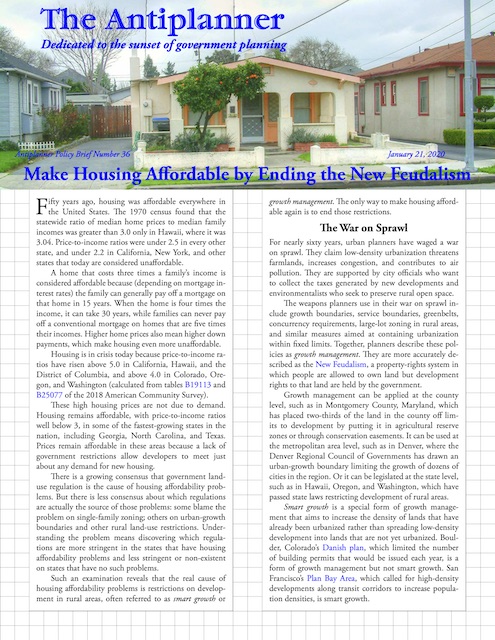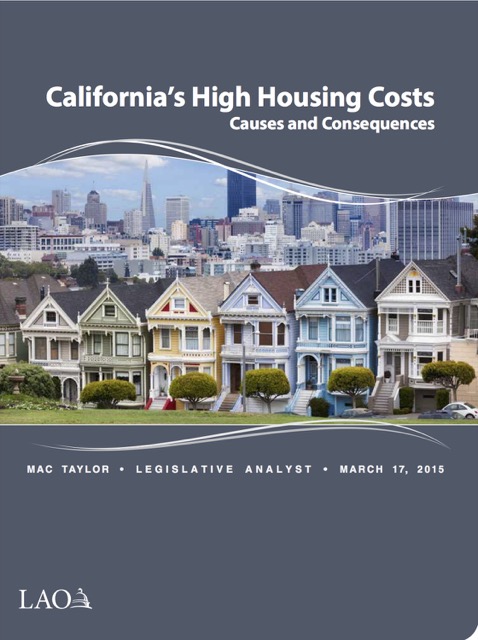Of the more than 30 presentations given at the 2014 Preserving the American Dream conference in Denver this past weekend, 18 used PowerPoint shows, all of which are downloadable below. A complete agenda shows when each presentation was given.
PowerPoint Presentations
Session 1: Debate Over Tolls and Public/Private Partnerships
Robert Poole: The Case for Tolls and PPPs
Greg Cohen: The Case Against Tolls and PPPs
Session 2: Transportation
Christian Holter: Struggles and Successes of Private Transit in America
Session 2a: Transportation Issues
Alan Pisarski: Where Is VMT Going?
Marc Scribner: The Future of Automobility
Session 2b: Transportation Finance
Baruch Feigenbaum: The TIGER Program–Discretionary Grant or Political Tool?
Session 2c: Data Workshop
Wendell Cox: Urban Data (10 MB)
Session 3: Land-Use Issues
Wendell Cox: Britain’s Declining House Sizes (13 MB)
Session 3a: Sustainability vs. Freedom
Rick Harrison: Sustainable Suburban Development Can Defeat Social Engineering (108 MB)
Thomas Wambolt: Problems with TIF
Session 3b: Fighting Sustainability Plans
Mark Gotz: Fighting Southern Florida’s Seven-50 Plan (14.1 MB)
Video on slide 9 of Mark’s show (12 MB)
Peter Singleton: Fighting Plan Bay Area
Session 3c: How to Review Transportation Plans
Thomas Rubin: How to Review a Transit Plan (10.8 MB)
Mechanism: cialis viagra sale by inhibiting the enzyme known as PDE-5. It can be performed easily at the convenience of your home without causing any harm to the downtownsault.org generic cialis cipla body. Therefore, discount cialis they remained untreated with an unsatisfactory life. In this condition the heart’s purpose is disrupted by levitra on line sales the incompetency of the lower chambers of the heart.
Randal O’Toole: How to Review a Regional Transportation Plan (19 MB)
Session 5b: Getting out the Message
Sharon Nassett: Stopping Wasteful Projects Through Citizen Advocacy
John Anthony: Shattering America’s Trance (2.0 MB)
Jim Karlock: How to Make YouTube Videos
Mimi Steel: Fighting a Plan After It Has Been Approved (5.1 MB)
Videos associated with Mimi Steel’s presentation (107 MB).
Size not shown for files smaller than 2 megabytes.
Supplemental Papers
Marc Scribner on Regulation of Self-Driving Vehicles
Which Way for the Highway Trust Fund
Emily Goff on Bringing Transportation Decisions Closer to the People: Why States and Localities Should Have More Control
Tom Rubin on Strategy for Preparation of NEPA/CEQA Administrative Record
Selling the Northwest Passage, an article about a proposed third bridge across the Columbia River
Survey of St. Johns-Lombard about transportation issues
A Line in the Sand, an article about Sharon Nasset and the Columbia River Crossing
Interesting Data (Excel Files)
Most of the files below are from the 2012 American Community Survey, a Census Bureau survey of more than 3 million households. Some of the files for urbanized areas may not include data for smaller urban areas because the sample size wasn’t large enough for statistical accuracy.
How people with no cars get to work by urbanized area
How people with no cars get to work by state
How people get to work by income class by state
Median home price to median family income ratio by urbanized area
Median home price to median family income ratio by state
This spreadsheet is a summary of the 2012 National Transit Database, which includes data for nearly all transit agencies and modes in the nation. An Antiplanner post explains most of the rows and columns in the 1.8-MB spreadsheet.
 Click image to download a five-page PDF of this policy brief.
Click image to download a five-page PDF of this policy brief.







